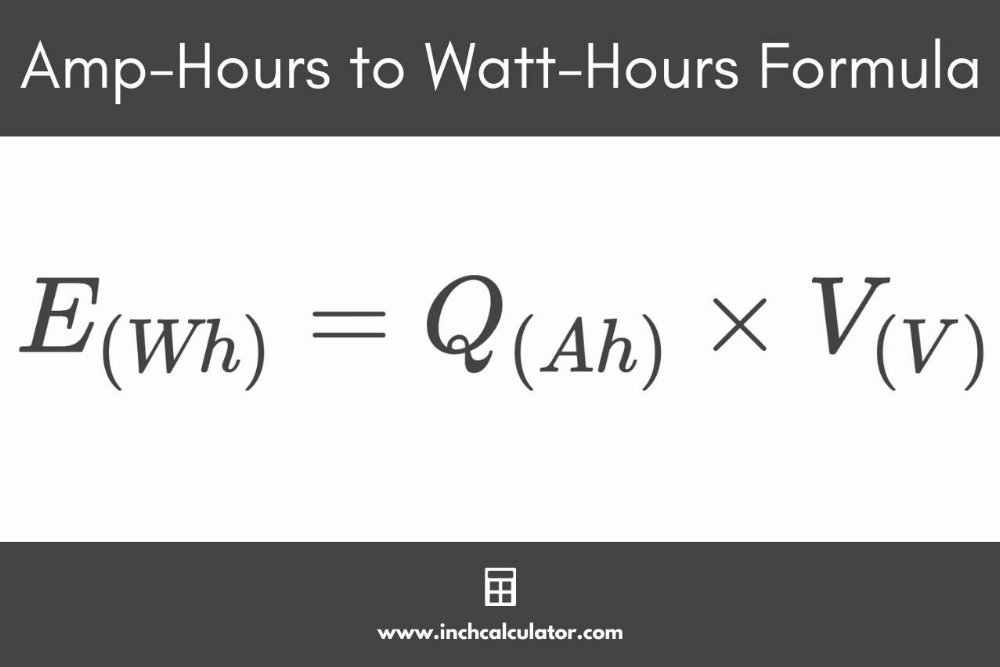Required Information
To calculate battery life, the following information is essential:
- Battery Capacity: Determine the battery’s rated Ampere-hours (Ah) or Watt-hours (Wh). This information is usually provided by the manufacturer and can be found on the battery label or in its documentation.
- Device Power Consumption: Determine the power consumption of the device or system you plan to power with the battery. This data can often be found in the device’s specifications or user manual. If not available, you can use a power meter to measure power consumption.
Step 2: Converting Battery Capacity to Watt-hours (Wh)
If the battery capacity is in Amp-hours (Ah), you need to convert it to Watt-hours (Wh). To do this, multiply the Amp-hour rating by the battery’s voltage. The formula is:
*Watt-hours (Wh) = Amp-hours (Ah) × Voltage (V)**
Step 3: Determine Device Power Consumption
If the device’s power consumption is in Watts (W), you can proceed to the next step. If it is expressed in milliwatts (mW) or another unit, convert the value to Watts (W) by dividing it by 1000, as 1 Watt = 1000 milliwatts.
Step 4: Calculate Battery Life
To calculate the runtime, divide the battery capacity (in Watt-hours) by the device’s power consumption (in Watts). The formula is:
Battery Life (hours) = Battery Capacity (Watt-hours) / Device Power Consumption (Watts)
Example Calculation:
Suppose you have a 10Ah battery with a voltage of 12V, and your device consumes 5 Watts of power. First convert Amp-hours to Watt-hours: 10Ah * 12V = 120Wh. The runtime can be calculated as:
Battery Life = 120 Wh / 5 W = 24 hours
Note: Consider battery efficiency and aging. Adjust the runtime by multiplying the result by the battery’s efficiency percentage. For example, if the battery operates at 90% efficiency, multiply the runtime by 0.9 for a more realistic estimate.
Part 6: The Importance of Understanding Ampere-Hours and Watt-Hours
Battery Selection
When selecting batteries for specific applications like electric vehicles or solar power systems, understanding Amp-hour and Watt-hour ratings ensures you choose the right battery with the required capacity and energy output.
System Efficiency
By analyzing Watt-hour consumption or production, you can assess the overall efficiency of a system and identify areas for improvement. Monitoring energy usage helps optimize performance and minimize waste.
Power Management
A thorough understanding of Amp-hours and Watt-hours enables effective power management, allowing you to plan accordingly.

A Quick Guide: Choosing the Right Lawn Tractor Battery
Unsure which battery to choose for your lawn tractor? We can assist you! Our guide will help you select the perfect battery and keep your lawn tractor running smoothly.
Mastering Deep Cycle Battery Charging
Not sure how to charge a deep cycle battery? Don’t worry! Our in-depth guide breaks down the entire process, teaching you the safest and most effective ways to charge it.
Battery Bank vs. Single Battery: Which is More Suitable for Your Energy Needs?
Wondering if a battery bank or a single battery is more suitable for you? We explain the differences, advantages, and cost-effectiveness of both options, so you can make the best choice for your energy needs.
What is a Battery Bank?
A battery bank is a collection of interconnected batteries designed to provide a reliable power source. Learn about its types, advantages, and applications in this detailed guide.
Flexible Film and Printed Battery Market Trends
The flexible film and printed battery market is rapidly evolving. This article explores the latest growth trends, innovations, challenges, and future developments in the industry.







